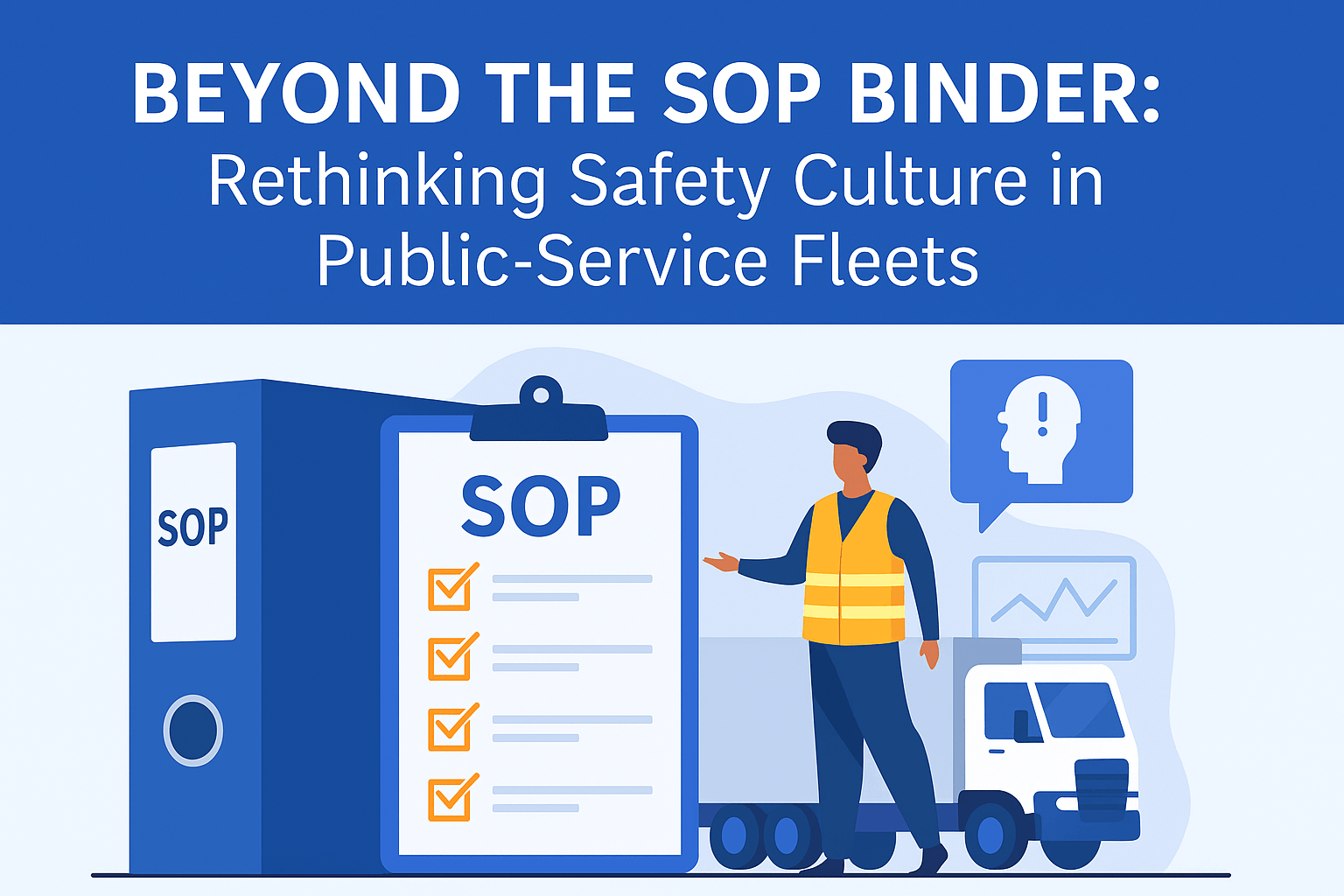
Sustainability and profitability don’t have to be at odds for fleet operators. When done right, going green can drive serious savings.
While large-scale transitions—like moving to electric vehicles (EVs)—often grab headlines, they’re not the only (or fastest) way to reduce emissions and costs. One of the most overlooked high-ROI strategies is also one of the simplest: defensive driver training.
As we celebrate Earth Week, let’s examine how smart, behavior-based fleet initiatives—particularly fuel-efficient driving habits—can shrink your carbon footprint and fuel bill starting today.
What Are Green Fleet Initiatives?
Green fleet initiatives are programs that aim to reduce your fleet’s environmental impact. This includes transitioning to EVs and hybrid vehicles, reducing idle time, optimizing routes, using alternative fuels, and training drivers to operate more efficiently.
These actions aren’t just good for the planet—they’re also good for your budget. Let’s explore how.
Fuel Efficiency: Where Defensive Driving Makes a Difference
Every gallon of fuel burned emits about 20 pounds of CO₂. Reducing consumption isn’t just about cost—it’s a direct win for sustainability.
One of the most effective ways to cut fuel use is to train your drivers to be safer, more aware, and more deliberate behind the wheel.
The Fuel-Saving Power of Defensive Driving
Defensive driving isn’t only about safety—it’s about strategic driving that avoids wasteful habits. When drivers adopt smoother acceleration, plan routes carefully, and minimize unnecessary braking or idling, they use less fuel—sometimes, a lot less.
Proven fuel-saving habits from defensive driving courses include:
- Anticipating traffic flow to avoid sudden stops
- Maintaining steady speeds
- Reducing hard acceleration and braking
- Limiting idle time
- Properly inflating tires
- Avoiding aggressive lane changes or tailgating
Impact on fuel consumption:
Fleets that implement defensive driving programs report fuel savings of 10% to 30%, depending on vehicle type and usage patterns. That’s thousands of dollars saved per vehicle per year—not to mention fewer accidents, lower emissions, and better driver morale.
EVs Are the Future—but Not the Fastest Fix
Electric vehicles are a fantastic long-term investment for reducing fleet emissions. They offer:
- Lower fuel costs (electricity vs. gas/diesel)
- Fewer maintenance issues (no oil changes, fewer moving parts)
- Regulatory compliance with tightening emissions laws
But here’s the catch: the upfront investment is steep. Between vehicle costs, charging infrastructure, and training, transitioning even part of your fleet to EVs can take years.
In contrast, implementing defensive driver training is an immediate, cost-effective action with measurable ROI—making it an ideal first step toward sustainability.
Green Fleet ROI: The Numbers That Matter
Initiative Avg. ROI Timeline Potential Savings
| Initiative | Avg. ROI Timeline | Potential Savings |
| Defensive driver training | Day 1–12 months | 10–30% fuel savings, fewer collisions |
| Idle time reduction | 6–12 months | $1,500–$3,000 per vehicle/year |
| Route optimization | 6–18 months | 10–25% mileage reduction |
| EV transition | 3–5 years | Long-term maintenance and fuel savings |
Defensive driving is a fast, low-barrier entry point to greener operations—with results you’ll see on your next fuel bill.
Beyond Fuel: Additional Benefits of Driver Training
🛡️ Fewer accidents – Safer drivers make fewer mistakes, reducing repair costs, downtime, and insurance claims.
📉Lower emissions – Less aggressive driving = less fuel burned = fewer pollutants released.
📈Better data – Telematics can validate improved driving behavior, helping you measure ROI.
Training also promotes personal responsibility and boosts morale—drivers see the connection between their habits, company goals, and the environment.
Stack the Savings: Combine with Other Fleet Initiatives
Defensive driving doesn’t work in isolation—it amplifies other green fleet strategies. Combine it with:
- Idle reduction policies
- Telematics tracking
- Route planning tools
- Tire maintenance programs
And when you’re ready to take the leap into EVs, your team will already be equipped with the mindset and behaviors that maximize efficiency across any vehicle platform.
Earth Week Action Plan: Start with Behavior
This Earth Week, make a wise, strategic choice. If you want to reduce emissions and cut costs without waiting years for infrastructure upgrades:
- Implement defensive driving training
- Reinforce safe habits with regular coaching
- Track fuel usage and celebrate wins
- Set measurable goals for idle reduction and MPG improvement
- Reevaluate annually for new opportunities (including EV grants and tax credits)
The truth is greener fleets start with smarter drivers. If you want a more sustainable operation, it doesn’t require waiting for the perfect EV rollout—it begins with retraining the human engine behind the wheel.
Final Thoughts: Greener, Smarter, Safer
The path to sustainability doesn’t have to be paved with high-cost hardware. Sometimes, the most effective solutions are right under your nose—or behind the wheel.
By prioritizing defensive driver training, your organization can:
- Cut fuel consumption
- Lower emissions
- Reduce wear and tear
- Save money
- And improve road safety—all at once
So this Earth Week, don’t just plan for a greener fleet someday. Drive it today—with purpose, strategy, and smarter habits.







